Obsidian
Obsidian is an igneous extrusive rock, which formed as felsic lava cools rapidly to form a natural glass.
There are numerous types of Obsidian, which have trade names based on their individual characteristics – Snowflake Obsidian, Mahogany Obsidian, Sheen Obsidian, etc. More details below!
-
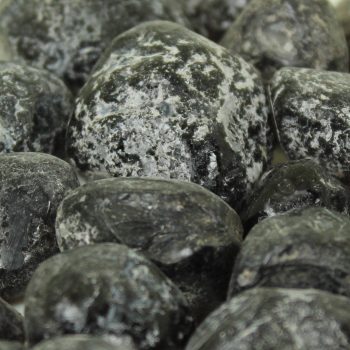
Apache Tear Obsidian (1)
-
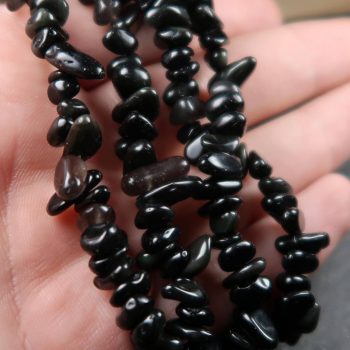
Black Obsidian (8)
-
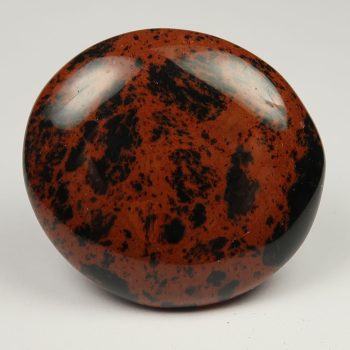
Mahogany Obsidian (10)
-
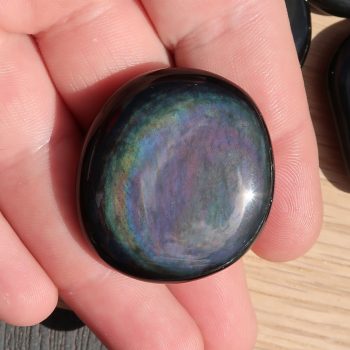
Rainbow Obsidian (3)
-
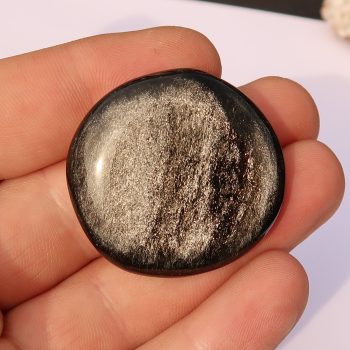
Sheen Obsidian (6)
-
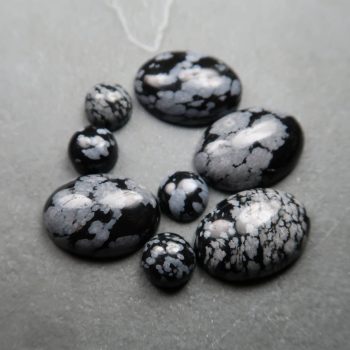
Snowflake Obsidian (8)
Appearance
A glass-like mineraloid, largely consisting of Silicon Dioxide.
Uses and History
Obsidian has been used for various uses since antiquity, mostly for decorative usage or for cutting edges.
Pliny the Elder mentioned the material in AD 77, but there have been archaeological finds dated to around 700,000 BC!
It was used to produce sharp blades and arrowheads throughout history, and even used to create mirrors due to how readily it takes a high polish. In the Americas the Aztecs, Maya, Mixtec and Toltec people used a weapon with Obsidian blades, known as a macuahuitl.
Surgical scalpels were tested, as they can have a cutting edge significantly sharper than steel. The book series and television show ‘Game of Thrones’ featured Obsidian heavily, although it was largely referred to as dragonglass.
Locales
A relatively worldwide distribution – wherever there have been rhyolitic volcanic eruptions.
It can be found in Argentina, Australia, Canada, Greece, Iceland, Italy, Japan, Kenya, Mexico, New Zealand, Scotland, Turkey and the USA.
Mineralogy
This information may vary depending on the type of Obsidian.
Apache Tear Obsidian: Small rounded nodules of black Obsidian in a Perlite matrix.
Black Obsidian: The most common type, a black natural glass with occasional inclusions and impurities.
Mahogany Obsidian: A reddy black glass with inclusions of Magnetite or Hematite causing a rich red colour.
Rainbow Obsidian: Similar to sheen Obsidian, air or gas bubbles under the surface cause a sheen with multiple colours, rather than just gold/silver.
Sheen Obsidian: A variety with a golden or silver-toned sheen caused by gas bubbles under the surface.
Snowflake Obsidian: Black Obsidian containing spherulites of Cristobalite.
Obsidian is often faked by sellers online, especially on eBay, from China. There are many coloured glasses being sold as Obsidian – see our post for more, and be vary wary of any brightly coloured or transparent ‘Obsidian’!
Shine a light directly through the piece – it will usually be partially translucent with a green or brown tone.
Hazards and Warnings
Obsidian is a naturally occurring glass, and as such can have extremely sharp fragments and edges when broken – to the extent that Obsidian scalpels have been tested.
Almost all rocks, minerals (and, frankly, almost all other substances on earth) can produce toxic dust when cutting, which can cause serious respiratory conditions including silicosis.
When cutting or polishing rocks, minerals, shells, etc, all work should be done wet to minimise the dust, and a suitable respirator or extraction system should be used.
Translations
Arabic:
- سبج
- السبج زجاج بركاني
Hindi:
- ओब्सीडियन
Portuguese:
- Obsidiana
Bengali:
- কাচের মতো দেখতে একজাতীয় আগ্নেয়শিলা
Indonesian:
Punjabi:
- ਓਬਸੀਡਿਅਨ
English:
Italian:
Russian:
- Обсидиан
- вулканическое стекло
French:
- Obsidienne
Japanese:
- 黒曜石
Spanish:
- Obsidiana
German:
Korean:
- 흑요석
Thai:
Gujurati:
- ઓબ્સિડિયન
Mandarin and Traditional Chinese:
- 黑曜石
Urdu:
- اوسیڈیئن
